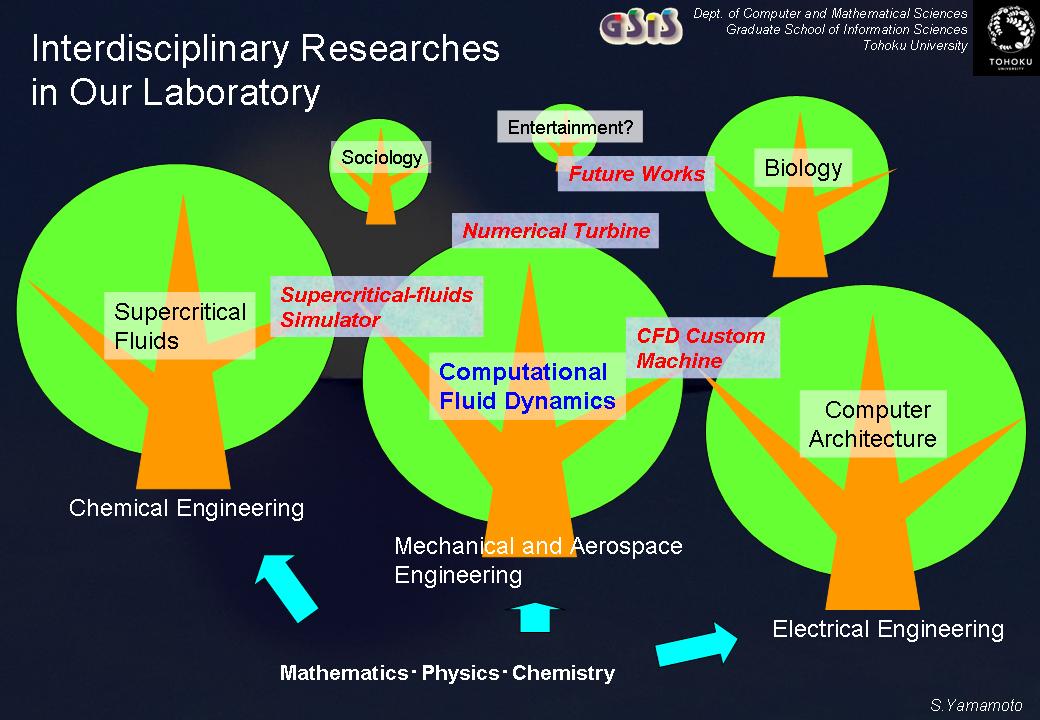2. 1 Introduction The cornerstone of computational fluid dynamics is the fundamental governing equations of fluid dynamicsthe continuity, momentum and energy equations. INTRODUCTION TO COMPUTATIONAL FLUID DYNAMICS PROPRIETARY AND CONFIDENTIAL This Manual is the proprietary property of The McGrawHill Companies, Inc. (McGrawHill) and protected by copyright and other state and federal laws. By Computational Fluid Dynamics (CFD) provides a qualitative (and sometimes even quantitative) prediction of uid ows by means of mathematical modeling (partial dierential equations) numerical methods (discretization and solution techniques) software tools (solvers. and postprocessing utilities) CFD enables scientists and. Learn some of the typical fluid flow analysis that can be done with solidworks flow simulation 2014 computational fluid dynamics (cfd). Webinar key points: What is CFD (Computational Fluid Dynamics) and why we use it, CFD modelling of gas dispersion, explosion and fires in complex industrial environments and terrain, demonstration of fire simulation in a process plant using the KameleonFireEx (KFX) software. Introduction to Computational Fluid Dynamics by the Finite Volume Method Ali Ramezani, Goran Stipcich and Imanol Garcia BCAM Basque Center for Applied Mathematics April 1215, 2016. Overview on Computational Fluid Dynamics (CFD) 1. Overview on Computational Fluid Dynamics (CFD) 8 1 8. Introduction to Computational Fluid Dynamics We have been using the idea of distributions of singularities on surfaces to study the aerodynamics of airfoils and wings. Introduction to Dynamics using FEA Six Session Online Training Course 2. 53 Hours per Session Do you know if your model is realistic? What is the importance of normal modes analysis? How do you calculate transient and frequency response input parameters effectively? Get the answers to these questions and more with this industryleading, codeindependent elearning course. Basics of Computational Fluid Dynamics with comprehensive deatails and Easy Expained Slideshare uses cookies to improve functionality and performance, and to provide you with relevant advertising. If you continue browsing the site, you agree to the use of cookies on this website. Computational Fluid Dynamics: A Practical Approach, Third Edition, is an introduction to CFD fundamentals and commercial CFD software to solve engineering problems. The book is designed for a wide variety of engineering students new to CFD, and for. An Introduction to Computational Fluid Dynamics: The Finite Volume Method, 2nd Edition This video lecture gives a basic introduction to CFD. Here the concept of Navier Stokes equations and Direct numerical solution (DNS) are explained in a logi Computational Fluid Dynamics, Second Edition, provides an introduction to CFD fundamentals that focuses on the use of commercial CFD software to solve engineering problems. The course provides an introduction to computational fluid dynamics. The students will train the numerical solution of model problems by developing and testing own MATLAB programs. The students will learn to assess the quality of numerical results and the efficiency of numerical methods for basic fluid flow model problems. Its early beginnings were in the 1960's. Its first successes came to prominence in the 1970's. The creation of the CFDservice industry started in the 1980's. Computational fluid dynamics (CFD) is the use of computers and numerical methods to solve problems involving fluid flow. The ultimate goal of the field of Computational Fluid Dynamics (CFD) is to understand the physical events that occur in the flow of fluids around and within designated object. Tribute to two outstanding careers in fluid dynamics and contribution to the VKI Lecture Series. The VKI has always been very proud to welcome toprank scientists to lecture in the various fields covered by the VKI Lecture Series. Computational fluid dynamics (CFD) is a branch of fluid mechanics that uses numerical analysis and data structures to solve and analyze problems that involve fluid flows are used to perform the calculations required to simulate the interaction of liquids and. This established, leading textbook, is suitable for courses in CFD. The new edition covers new techniques and methods, as well as considerable expansion of the advanced topics and applications (from one to four chapters). This book presents the fundamentals of computational fluid mechanics for the novice user. It provides a thorough yet userfriendly introduction to the governing equations and. Atul Sharma, IIT Bombay, India Dr. Sharma is an Assistant Professor in the Department of Mechanical Engineering at the Indian Institute of Technology, Bombay. Computational Fluid Dynamics An Introduction Simulation in Computer Graphics University of Freiburg WS 0405 University of Freiburg Institute of Computer Science Computer Graphics Laboratory This slide set is based on: n John D. , Computational Fluid Dynamics. Introduction to Computational Fluid Dynamics Analysis (CFD): Theory and Applications Two Day Course Offered both in the UK (English language) and Germany (German language) NAFEMS, the only independent notforprofit organisation with the aim of promoting the effective and reliable use of CFD, addresses this requirement by providing this two day example driven, practical course. 2 1 Introduction: This chapter is intended as an introductory guide for Computational Fluid Dynamics CFD. Due to its introductory nature, only the basic principals of CFD are introduced Computational Fluid Dynamics (CFD) is a technology based on a fast and reliable computational methodology for solving complex fluid flow and heat transfer problems. CFD enables the product design team to reduce their risks of potential design failures, optimize their engineering design, and, could therefore, provide them with that illusive competitive advantage in the marketplace. Introduction to Computational Fluid Dynamics is a selfcontained introduction to a new subject, arising through the amalgamation of classical fluid dynamics and numerical analysis supported by powerful computers. Written in the style of a text book for advanced level B. students of various science and engineering disciplines. Computational Fluid Dynamics or CFD is the analysis of systems involving fluid flow, heat transfer and associated phenomena such as chemical reactions by means of computerbased simulation. The technique is very powerful and spans a wide range of industrial. Introduction of Computational Fluid Dynamics Wangda Zuo FAU ErlangenNrnberg JASS 05, St. Basics of Computational Fluid Dynamics 1. Concept of Computational Fluid Dynamics Computational Fluid Dynamics (CFD) is the simulation of fluids engineering systems using Computational fluid dynamics (CFD) is the science of predicting fluid flow, heat transfer, mass transfer, chemical reactions, and related phenomena by solving the mathematical equations which An Introduction to Computational Fluid Dynamics THE FINITE VOLUME METHOD Second Edition H K Versteeg and W Malalasekera ANINA01. qxd 09: 53 AM Page iii (a) A computational domain is a region in space (either 2D or 3D) in which the numerical equations of fluid flow are solved by CFD. The computational domain is bounded by edges (2. This module provides an introduction to the lattice Boltzmann method, a powerful tool in computational fluid dynamics. The lesson is practice oriented and show, step by step, how to write a program for the lattice Boltzmann method. The present book through the topics and the problems approach aims at filling a gap, a real need in our literature concerning CFD (Computational Fluid Dynamics). In physics and engineering, fluid dynamics is a subdiscipline of fluid mechanics that describes the flow of fluids liquids and gases. It has several subdisciplines, including aerodynamics (the study of air and other gases in motion) and hydrodynamics (the study of liquids in motion). Fluid (gas and liquid) ows are governed by partial dierential equations which represent conservation laws for the mass, momentum, and energy. Computational Fluid Dynamics (CFD) is the art of replacing such PDE systems His main research interests include computational fluid dynamics, simulation of moving boundary problems, and simulation of convective heat transfer for external and internal flows. He currently teaches courses on Fluid Mechanics, Heat Transfer, Fluid Dynamics, Computational Methods in Thermal and Fluid Engineering, and Computational Fluid. The Finite Volume Method in Computational Fluid Dynamics: An Advanced Introduction with OpenFOAM and Matlab (Fluid Mechanics and Its Applications) F. 3 out of 5 stars 4 Introduction to Computational Fluid Dynamics: Development, Application and Analysis Ebook written by Atul Sharma. Read this book using Google Play Books app on your PC, android, iOS devices. Download for offline reading, highlight, bookmark or take notes while you read Introduction to Computational Fluid Dynamics: Development, Application and Analysis. Introduction to Computational Fluid Dynamics Bram van Leer and Kenneth G. Powell Department of Aerospace Engineering, University of Michigan, Ann Arbar, MI, USA The book provides an elementary tutorial presentation on computational fluid dynamics (CFD), emphasizing the fundamentals and surveying a variety of solution techniques whose applications range from low speed incompressible flow to hypersonic flow. An Introduction to Computational Fluid Dynamics is the ideal text for the newcomer to the area whether they be undergraduates, graduates, or professionals. It provides thorough yet accessible coverage of commercial finite volume based CFD codes within the context of the underlying theory, giving the reader a full appreciation of CFD and its. This series will help participants develop an understanding of computational fluid dynamics and provide an opportunity to practice numerical solution techniques as applied to the equations governing fluid mechanics and heat transfer. The mathematical structure is the theory of linear algebra and the. His main research interests include computational fluid dynamics, simulation of moving boundary problems, and simulation of convective heat transfer for external and internal flows. He currently teaches courses on Fluid Mechanics, Heat Transfer, Fluid Dynamics, Computational Methods in Thermal and Fluid Engineering, and Computational Fluid. An Introduction to Computational Fluid Dynamics by HK Versteeg, Malalsekera isleading textbook, is suitable for courses in CFD. The new edition covers new techniques and methods, as well as considerable expansion of the advanced topics and applications. CFD represents generically computing fluid dynamics. This covers all methods used to predict flow behavior, heat transfer, chemical reactions, etc. Basically CFD can solve any fluid dynamics phenomenon, but it doesn't end here. An Introduction to Computational Fluid Dynamics is the ideal text for the newcomer to the area whether they be undergraduates, graduates, or professionals. It provides thorough yet accessible coverage of commercial finite volume based CFD codes within the context of the underlying theory, giving the reader a full appreciation of CFD and its. Grid must be sufciently ne to resolve the ow! dynamics and computational uid dynamics specically. Introduction to Compressible Computational Fluid Dynamics James S. Sochacki Department of Mathematics James Madison University jim@math. edu Abstract.











